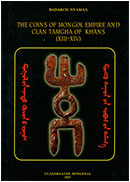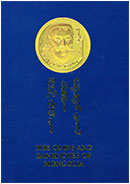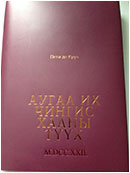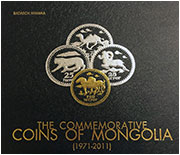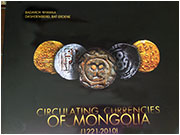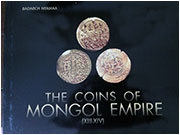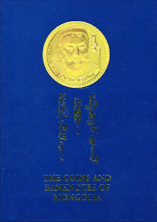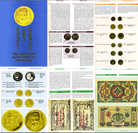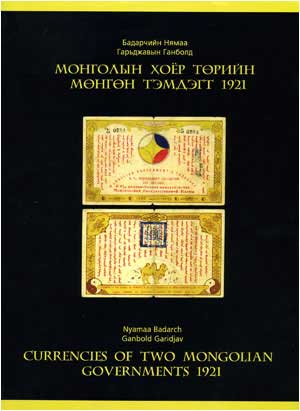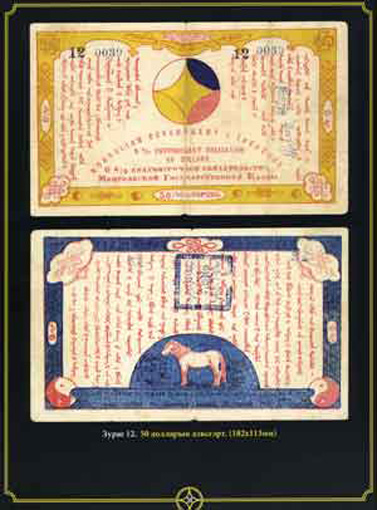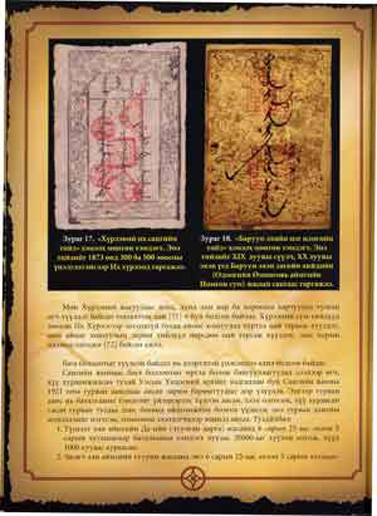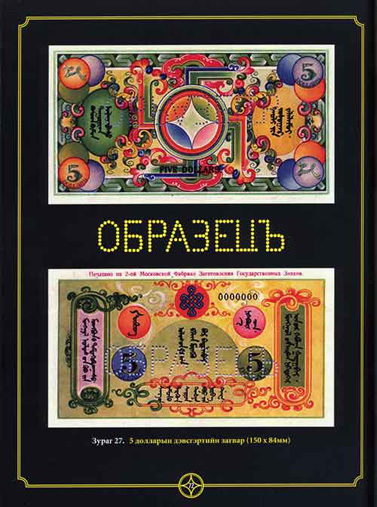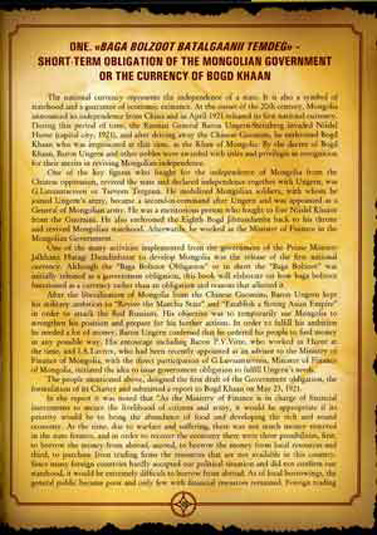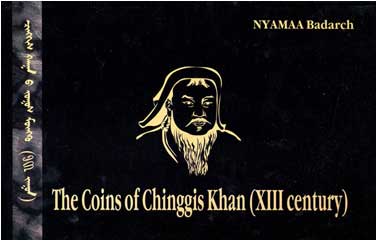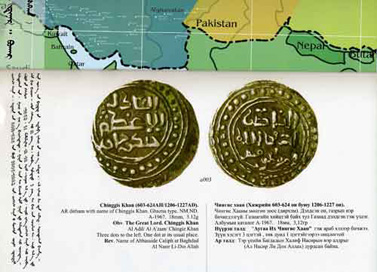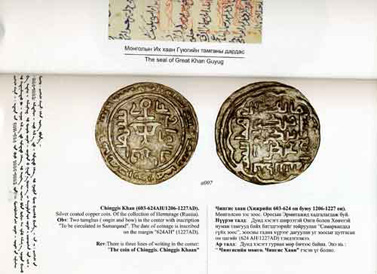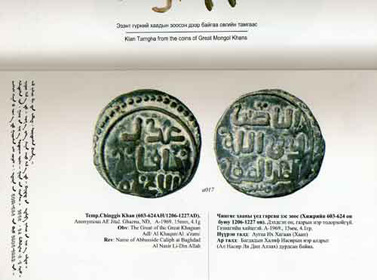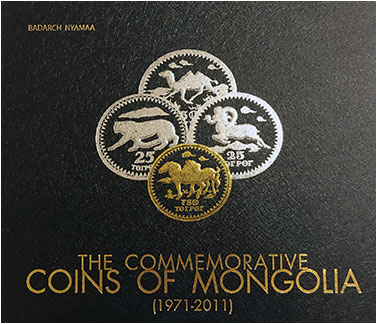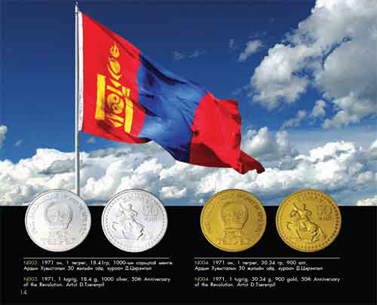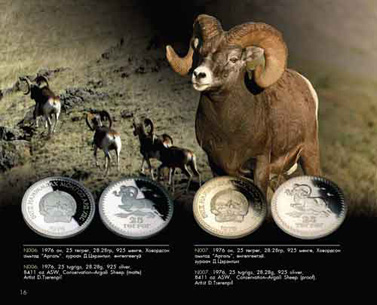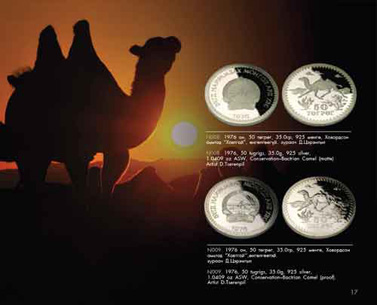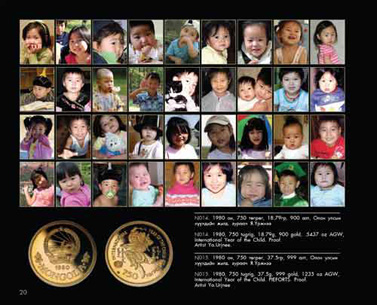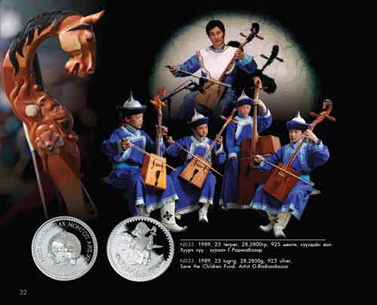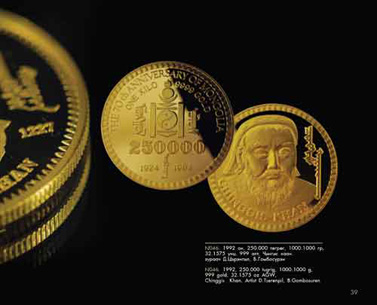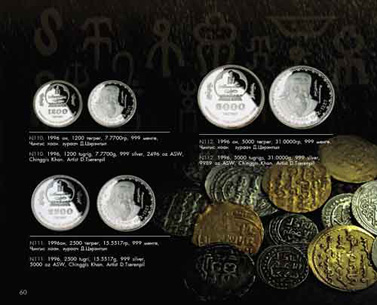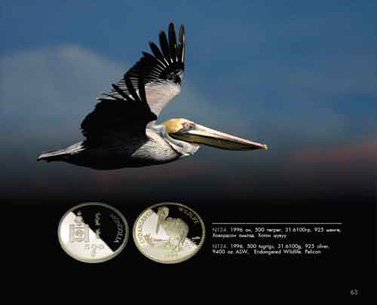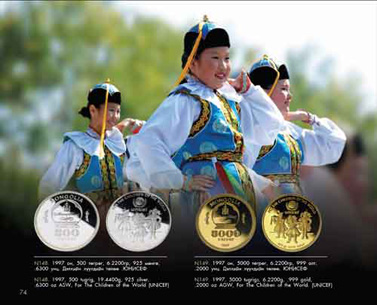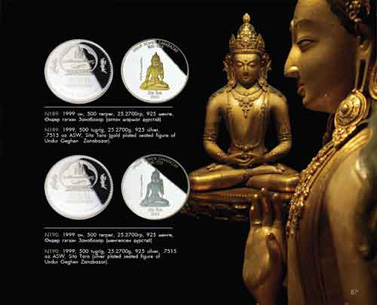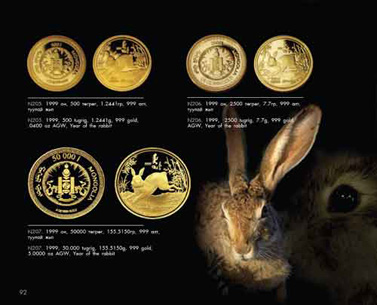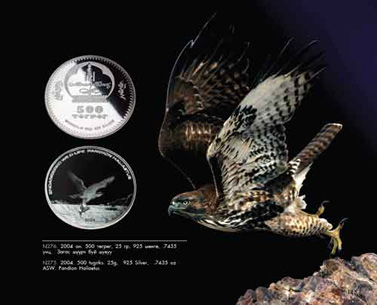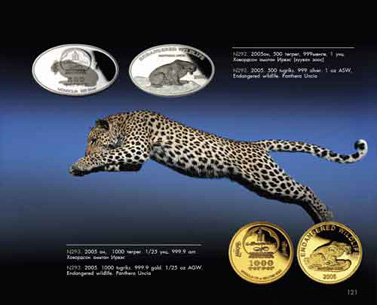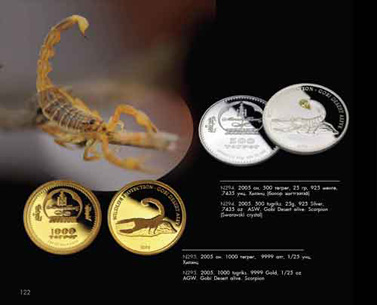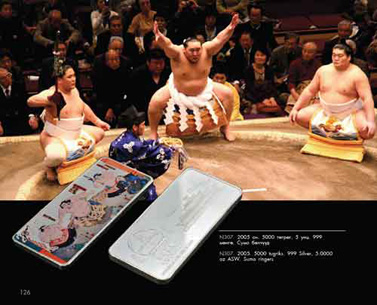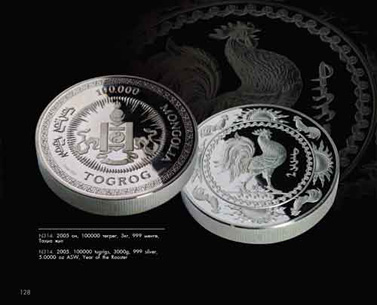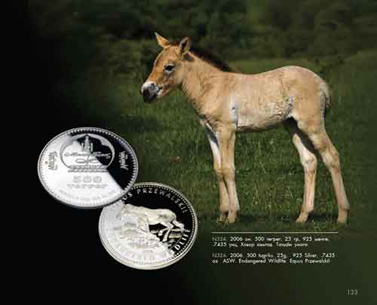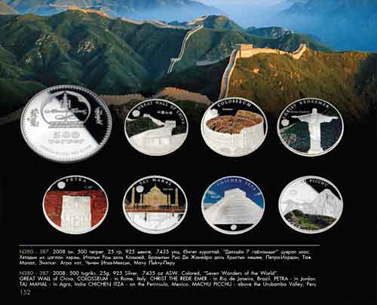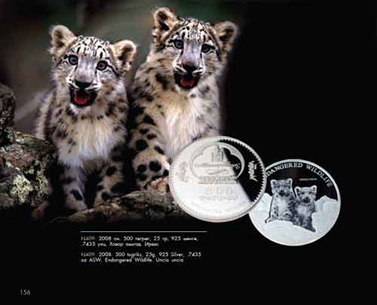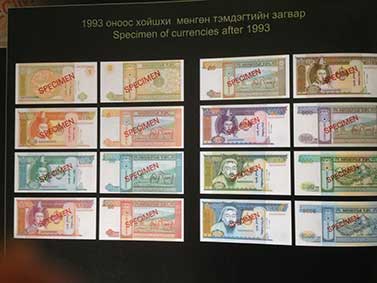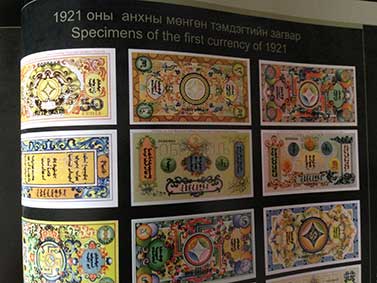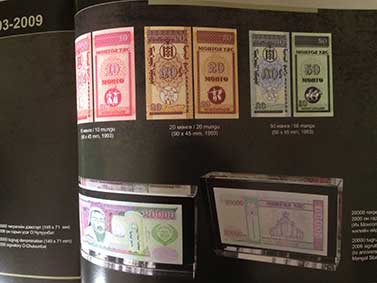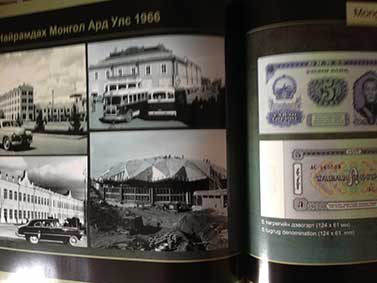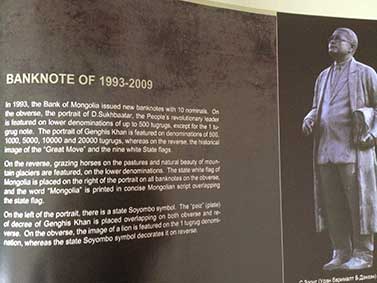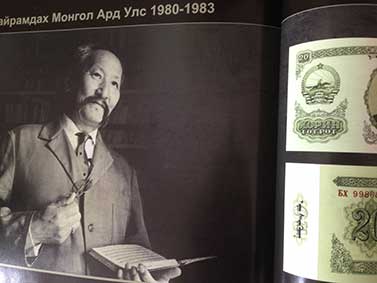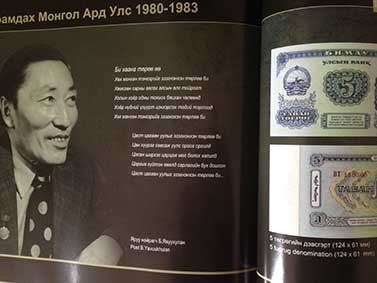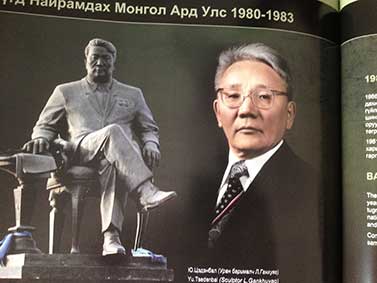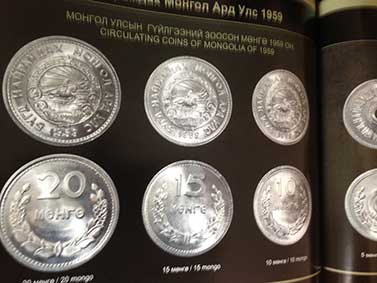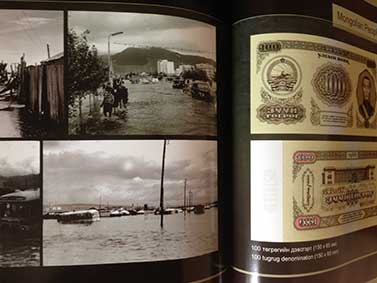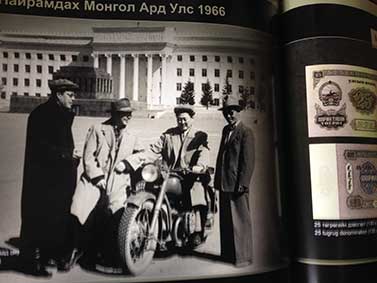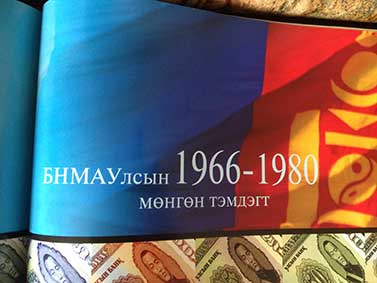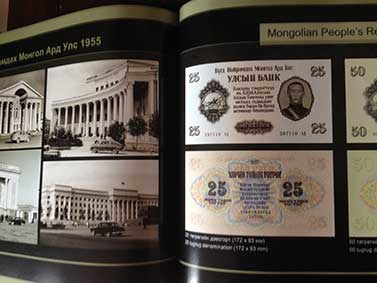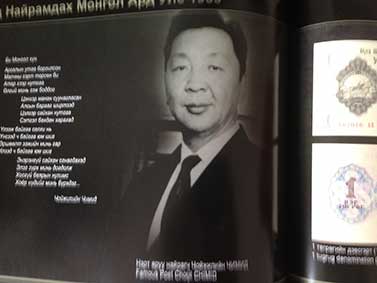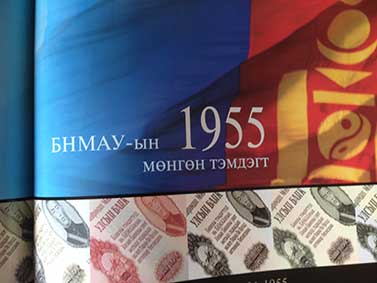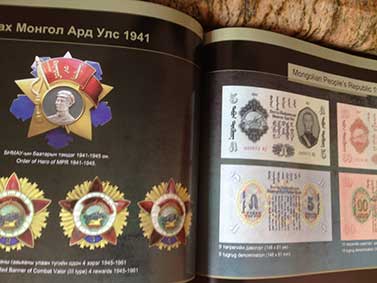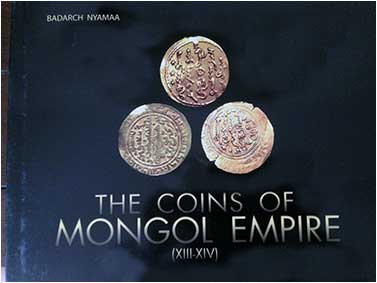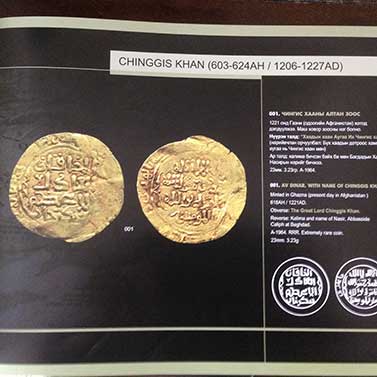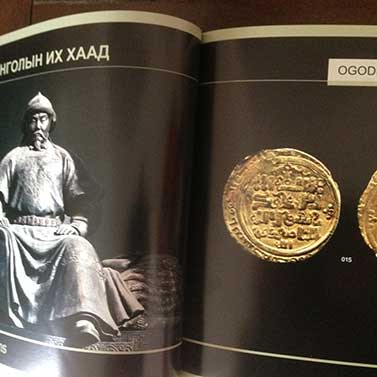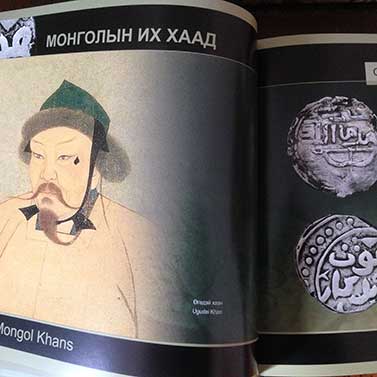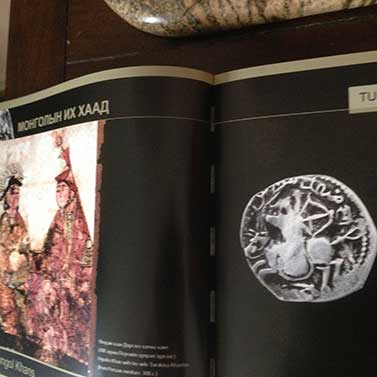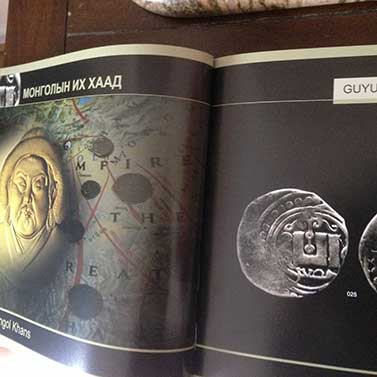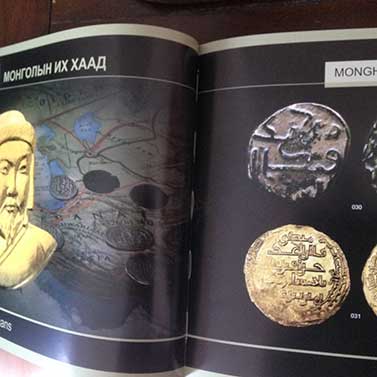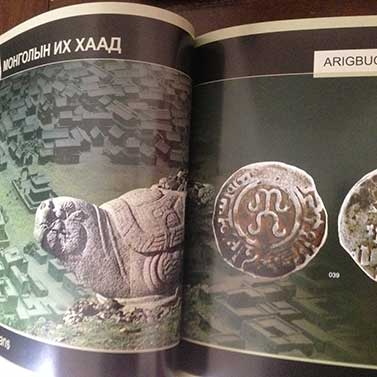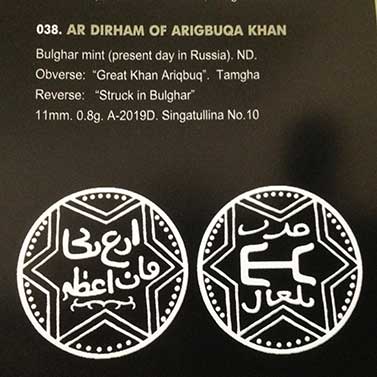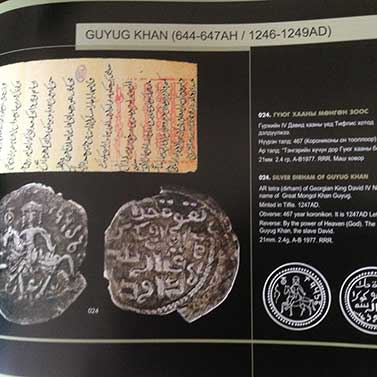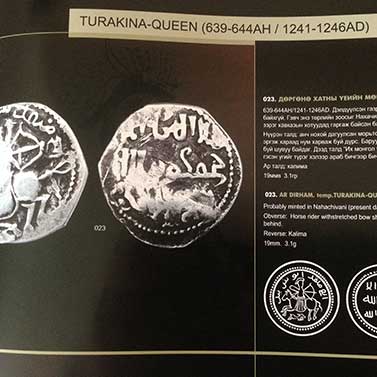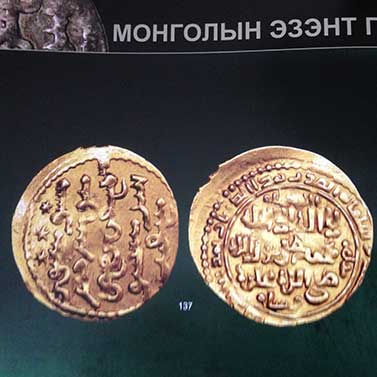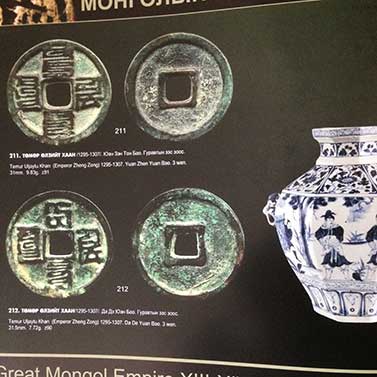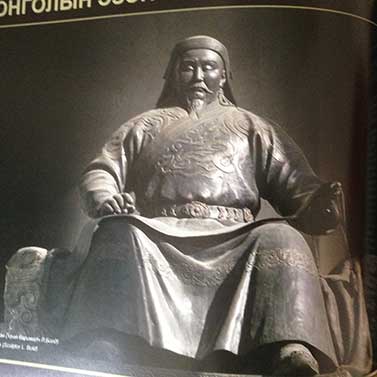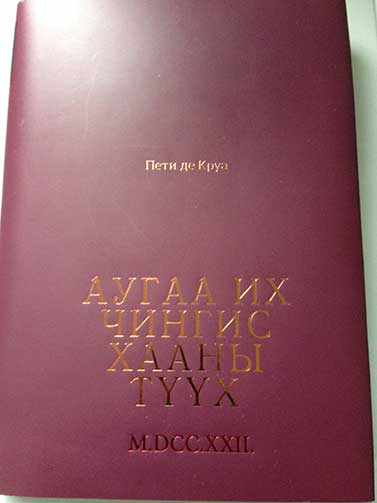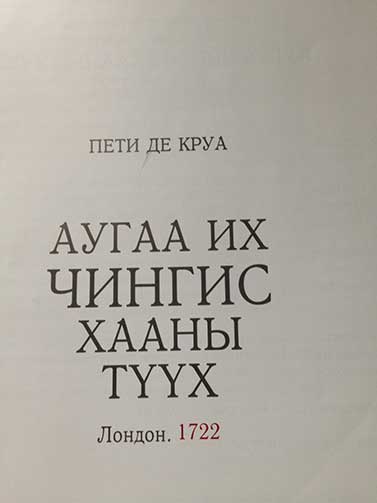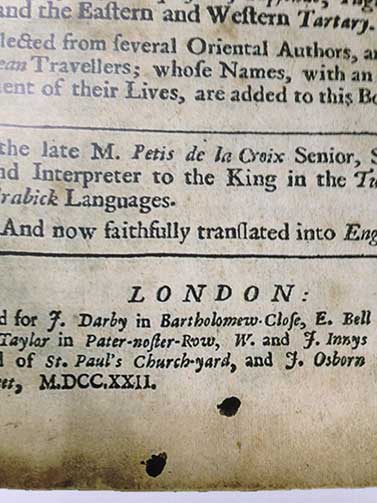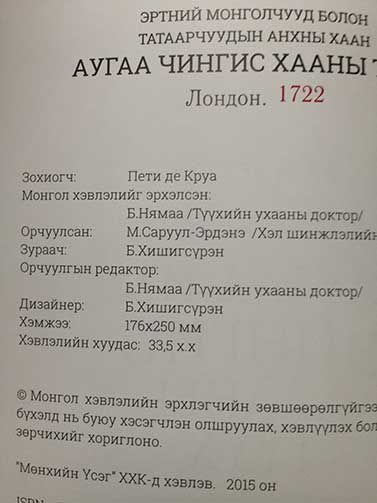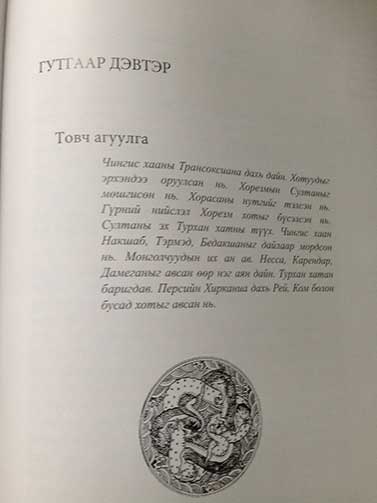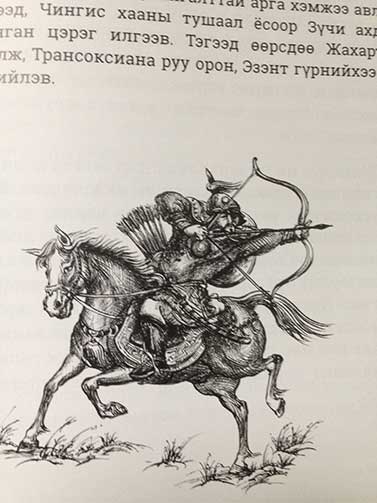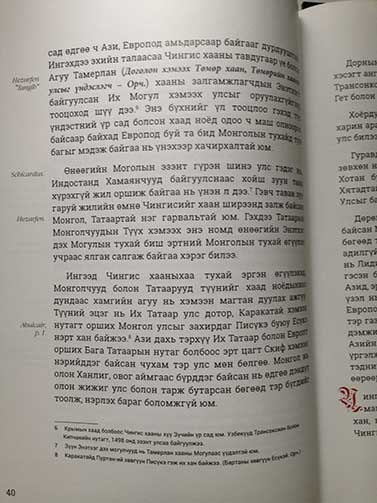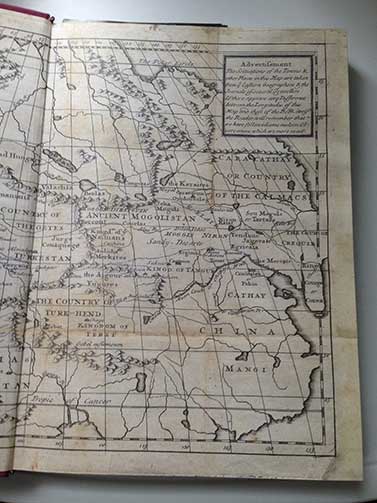|

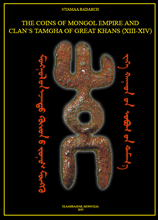
Click on the image to view larger picture.
Та зураг дээр дарж дүрсийг томруулан үзнэ үү.
Author: B. Nyamaa
This book explores some very important issues on the coins of Mongol Empire of XIII through XIX centuries.
A great deal of emphasis is placed on studying hand seals and the Clan seals of Genghis, Ugudei, Guyug,
Munghe Ariqbuqa Khans as well as their 70 descendant Khans and their Clans. For the first time in Mongolian
history (and anywhere else) this book provides an extremely important link between the Great Mongol Khans
and the corresponding coins that were minted during their rein based on the hand and clan seals these Khans
used.
There are also some interesting materials on different related topics. For example, the author explains
scripts on the coins, the actual designs of the hand seals, their special engravings and much more.
The book is filled with fine photo images of the coins. Persian miniatures of XIII-XVI centuries also used
in the book add a material rich touch to it.
The second part of the book includes images from the author’s personal collection of the coins of Great
Khans. 233 color images along with their narrative descriptions and translations are displayed here.
This book was published in Mongolia in June 2005 on A4 paper with 260 pages in both Mongolian and English
languages. It was published with two different covers: soft and hard. The hard cover has a color wrap around
it.
The topics covered in this book have attracted a lot of Mongolian researchers and historians. This is
definitely a dark area in Mongolian history worth exploring.
* 260 pages in Mongolian and English.
* 233 color images of coins of Khans.
* More than 100 Clan Tamgha of Khans.
* 2005. Ulaanbaatar. Mongolia
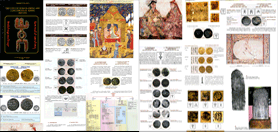
Click on the image to view larger picture.
Та зураг дээр дарж дүрсийг томруулан үзнэ үү.
’’Монголын Эзэнт Улсын зоосон мөнгө ба хаадын овгийн Тамга” номын
тухай.
Зохиогч: Б.Нямаа
Энэ номонд ХШ-ХIV зууны Монголын Эзэнт Улсын зоосон мөнгөний тухай
чухал асуудлыг судлажээ. Ялангуяа Монголын хаадын зоосон мөнгө ба
тэдний мутрын тийз дээрхи овгийн тамгуудыг судалснаар Чингис Хаан, Өгөөдэй, Гүюүг, Мөнх,Аригбөх зэрэг их
хаад болон тэднийг залгамжилсан 70 орчим хаадын 100 гаруй овгийн тамгыг анх удаа сонирхолтой баримтаар олж
тогтоосон байна.
Мөн энэ номонд монголын эртний зоосон дээрхи монгол бичгийн тухай, хаадын захидал, мутрийн тийзний тухай,
зоосны чимэглэл, дүрс зургуудын тухай сонирхолтой материалууд орсон байна. Уг номонд олон фото зураг орсон
бөгөөд ялангуяа ХШ-ХVI зууны Персийн миниатюр зургуудыг өргөн ашигласан болно.
Номын 2-р хэсэгт зохиогчийн хувийн цуглуулгаас авсан Монголын эзэнт Улсын 233 зоосны томруулсан өнгөт
зургийг тайлбар орчуулгын хамт оруулжээ.
Энэ номыг 2005 оны 6 сард А 4 хэмжээний цаасан дээр 260 хуудастайгаар англи, монгол хэл дээр Монголд
хэвлэсэн ба хатуу, зөөлөн 2 янзын хавтастай, хатуу хавтасны гадуур өнгөт хавтсаар давхар бүрсэн.
Энэ номонд орсон олон асуудлууд, ялангуяа Монголын хаадын овгийн тамганы тухай асуудал Монголын түүхч,
судлаачдын анхаарлыг ихэд татаж байгаа билээ.
* 260 хуудастай, англи монгол хэл дээр хэвлэгдсэн
* Монгол хаадын 260 гаруй зоосны өнгөт зураг
* Хаадын 100 гаруй тамганы дүрс зурагтай
* 2005 онд Улаанбаатар хотод хэвлэгдсэн.
Book Reviews
-
-
-
From: Jim Farr (USA). Oriental
Numismatic Society Journal 2005 #186
The Coins of Mongol Empire and Clan Tamgha of Khans (XIII-XIV), by Nyamaa
Badarch. Ulaanbaatar, Mongolia. 256 pp, A4 format, lavishly illustrated throughout, mostly with color
photos. Available from the author, Nyamaa Badarch.
This is a beautifully produced book that should be in the library of anyone interested in the history and
coins of the Mongol dynasties. The author was born in Mongolia and graduated as a historian-translator from
the Institute of Asia and Africa of the University of Moscow. In recent years he has devoted himself to the
collection and study of Mongol coins. His new book is a welcome result of his interest.
The first part of the book is an extensive and detailed analysis of the tamghas, symbols of individual
clans and tribes, found on Mongol coins. As the author explains in his introduction, when a clan would
split from another clan, the new clan would adopt a new tamgha formed by adding to or otherwise modifying
the tamgha of the parent clan. This sets up the premise of his analysis that the evolving tamghas found on
coins of the Chingizids, Golden Horde (Jujids), Golden Horde (Hulaguids), Chaghatayids and the Yuan Dynasty
reflect the political and familial relationships of the issuers of the coins.
The analysis of the tamghas on coins is accompanied not only by line drawings and photographs of the coins
on which the tamghas are found, but also by archaeological sites, artifacts, and contemporary artwork and
documents with personal seals of the Mongol khans. There are also numerous diagrams showing the
relationships among different tamghas and a final summary table showing how tamghas changed over time from
the parent tamgha through the various divisions of the Chinghizids into separate dynasties and as modified
by individual rulers.
The second part of the book attempts to be a comprehensive discussion of all known coins with Mongol
inscriptions in Uighur or Phags-pa script. Each coin is photographed, and the Mongol inscriptions are
written out, analyzed and translated. The author compares his translations to those of other scholars and
explains his preferences based on Mongol history and religion. It is also pointed out that many of the
Mongol legends are also found on official state seals of Mongol khans.
The section on Mongol script also continues to identify tamghas on coins. Both the tamgha and Mongol
script sections of the book contain relevant historical notes.
The final part of the book is a catalogue of the Mongol coins in the author’s private collection. It
contains 233 coins carefully selected by the author for their variety and quality. The catalogue is
organized with two coins per page, each with an enlarged clear photograph, a smaller line drawing, metric
information (diameter and weight) and a translation of the legends. While not a comprehensive collection,
it contains some very rare coins that have not been published elsewhere, as well as well-struck and
well-preserved examples of more common types. It is clearly a collection assembled by someone with a good
eye for quality.
In short, the book is both important to numismatics and a delight to look at. Perhaps the highest
compliment I can pay to the author is that his work clearly shows his love and appreciation for the history
and coins of his homeland. He chose not only to provide his analyses of the material, but also to present
the material in a manner that transcends the narrow subject matter. This is a book that I can
unhesitatingly recommend to anyone interested in coins or Asian history.
James A. Farr
Tallahassee, Florida
From: Pavel N. Petrov (Russia).
Russian Academy of Science
Dear Reader,
You are holding a book that is a first of its kind in the world not to mention Mongolia. The value and
importance of the book is enormous as it tries to cover retrospectively a whole set of questions on
Mongolian numismatics starting with the tamga on the coins up to the detailed analysis of each coin itself.
One of the real highlights of this book is an extensive research done on the tamga of the coins. A coin is
not just a mere tender for exchange; it is a valuable source of history. That is why the tamga on these
coins carry a legal presentation of the times through which they were valid. According to the researches
done previously by several numismatists including myself there is a number of interesting questions. Why
were there different tamga on the coins from different regions ruled by one Khan? What tamga belongs to
whom? And most importantly, why is the status of the tamga changes when it is minted on the coins as opposed
to any other objects like ceramic ware or metal objects of that historic time? To understand all of this
researchers including the author himself have to really dig in to the very minor detail of every evidence
that comes into the light. The research is far from being finished, this is just a beginning. A lot of
questions are still waiting to be answered. There are more pleasant and surprising discoveries ahead.
I hope that after reading this book some of you will be inspired and motivated by this subject. Maybe
you’ll want to know more about the questions you’ll come up to reading it, and hence, join those who are
fascinated with the Mongolian numismatics of the Great Khans era.
I wish this book to have a long and safe journey ahead!
Pavel N. Petrov
From: Haroon Tareen
(Pakistan). Secretary of Pakistan Numismatic Associaion
Our knowledge of Chengiz Khan and his descendants is derived mostly from Islamic sources, such as
Tarikh-i-Jahan Gusha or Tarikh-i-Rashidi. Those sources are silent on various topics and seals and tamghas
of the Khans is one such topic. Fresh material emerges from time to time in the shape of newer varieties of
coins which provide insight into more areas of the Mongol period, e.g. till recently no Gold coins of
Chengiz Khan were known but now several of the Gold Dinars have been discovered that name Chengiz Khan as
the issuing authority. But there still are enigmatic coins with unattributed seals/tamghas from Mongol
period, particularly the era following the death of Chengiz Khan. Numismatic collectors and scholars have
different views on some Tamghas and seals of the Great Khan and his descendants.
Now a Mongol, probably the first one from Mongolia, has taken up the tedious task of determining positive
attribution for enigmatic and unidentified types of Seals and Tamghas. Nyamaa Badarch has put in a lot of
effort in compiling a research focused on the Tamghas and Seals of the Great Khan and his posterity and
corroborated this research by numismatic evidence. It has been a privilege for me to have witnessed his
efforts in this context and to have provided whatever material and support I could from Pakistan to enable
Nyamaa Badarch to compile this work.
Haroon Tareen
(Pakistan)
|

